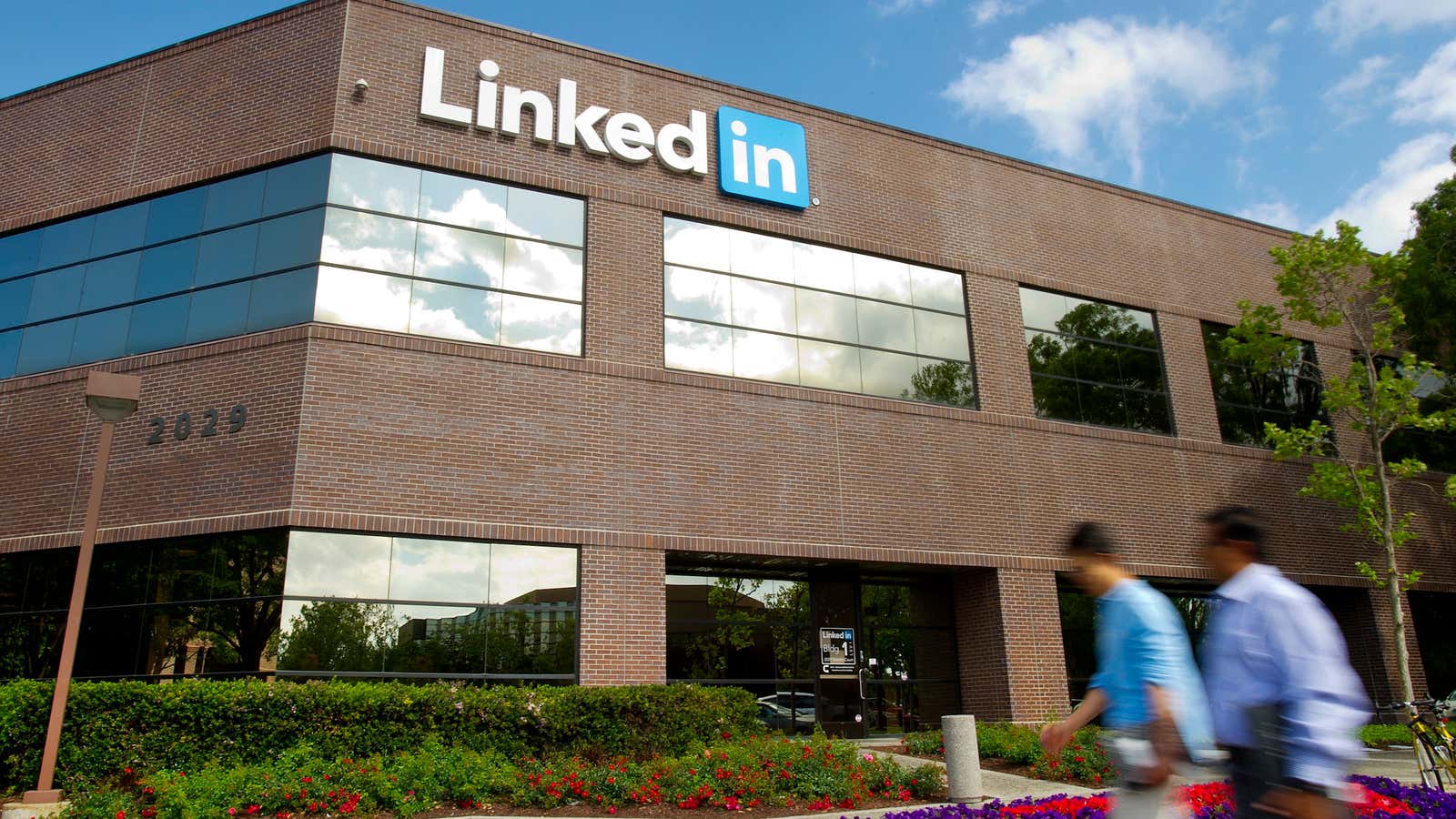LinkedIn wants users to spend more time on its portal. And for that, it appears to be taking inspiration from Facebook.
Over recent months, the professional networking portal has been rolling out social media-like features for its users. For instance, beginning April, it launched several new and colourful emojis that can be used to react to a post. These emojis were launched in India along with the US and the UK, among other regions.

“Reactions make it easier for members to participate in conversations. Our research shows that they make it easy for members to visually express their sentiment on a topic, in a way that goes beyond a ‘like’,” Deepa Sapatnekar, head of communications for India and consumer PR lead for APAC, LinkedIn, told Quartz.
The company is also piloting LinkedIn Events, which allows members to create and join events that they are interested in and stay in touch with like-minded people post the event. In February, it also launched Trending News, which highlights industry-wise top developments of the day and provides different perspectives on these topics.
Driving engagement
India is home to around 9% of LinkedIn’s total subscriber base with over 57 million users here. This is not very different from Facebook, which is wildly popular in India and has around 10% of its user base (300 million) in India.
However, the challenge facing the Microsoft-owned company is that a large number of its users are nearly inactive or have a nominal presence on the platform. A majority of LinkedIn users in India simply create an account and set up their profiles, but don’t visit the website for months, the founder of a leading digital agency told Quartz, requesting anonymity.
The new interactive features hint that LinkedIn has taken a cue from Facebook. In 2016, Facebook had added six new reaction emojis for its users besides the original “Like” button.
But are these handy reactions enough to drive engagement in India?
Experts believe these colourful reactions might struggle to take off, at least in India.
“People are on LinkedIn to attract the eyeballs of recruiters, investors and to expand their professional network. The move to use a slew of emojis is likely to dilute its imagery of being a more serious and professional networking platform,” said Vidit Gupta who is focused on building digital-first businesses.
“LinkedIn will start to look and mirror social networking mediums like WhatsApp, Facebook or Instagram,” added Gupta, co-founder of maternity and childcare-related portal Bump to Baby Co and director at Orange Education, an e-education solutions provider.
LinkedIn, however, said it has been cautious and ensured that the newly-introduced reactions are not frivolous. The company studied the top one- or two-word comments that their subscribers use on the portal for coming up with these new emojis.
Some experts even believe that these emojis might be a step too little and too late for tapping growth in India. “We need to look at what (Indian jobs portal) Naukri has done over the years to survive. Ideally, a professional media giant like Linkedin with Microsoft backing could have eaten away local platforms,” said Anuj Sayal, group chairman, ADG Online, a digital marketing firm.
